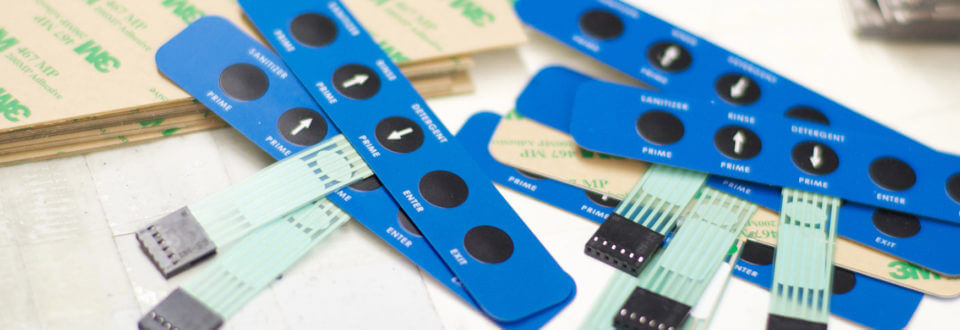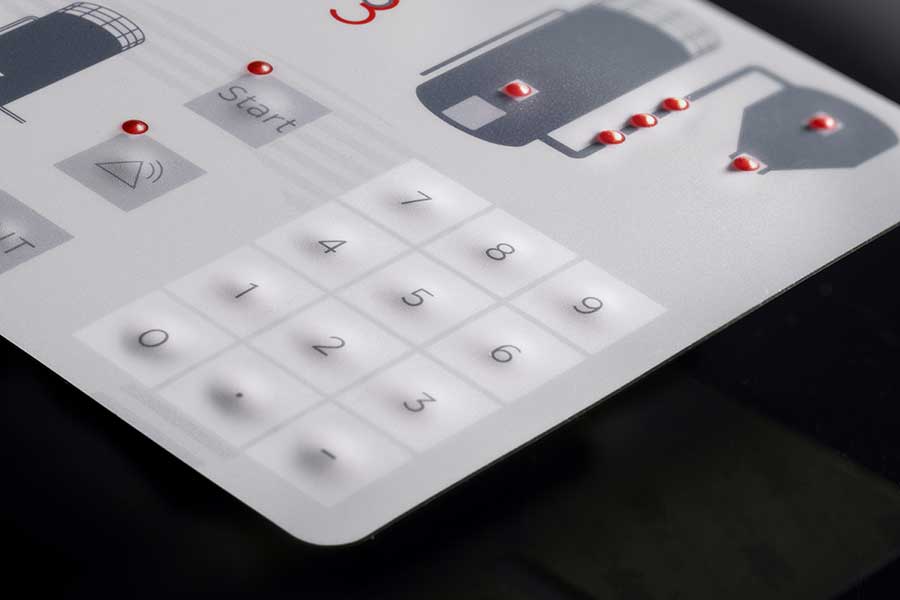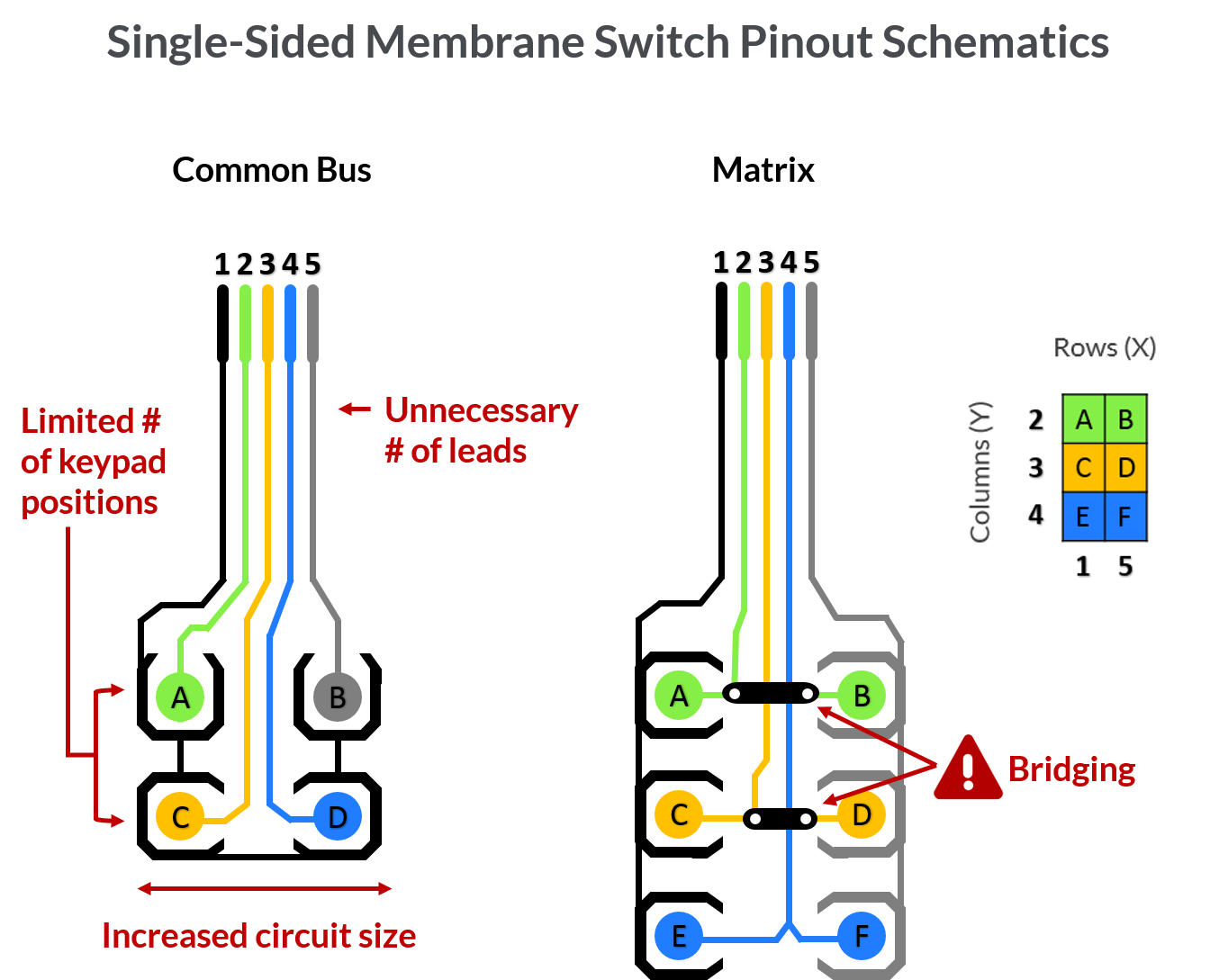How to Choose the Right Membrane Switch for Your Next Project
Understanding Membrane Layer Changes: The Key to Reliable and sturdy Controls
Membrane switches represent an essential aspect of contemporary user interface design, blending capability with durability in numerous applications. As we explore the ins and outs of membrane layer switches, it becomes clear that their function in boosting control systems is both complicated and extensive, elevating questions about exactly how finest to utilize their capacities in future developments.
What Are Membrane Switches?
Membrane buttons are an innovative remedy in the world of interface technology, combining capability and style flawlessly. These tools work as an interface between users and electronic systems, integrating several components into a compact format. Usually built from versatile, thin layers of materials, membrane switches are designed to react to touch, enabling users to interact with machinery and electronic devices effectively.
The primary aspects of a membrane layer button consist of a printed circuit layer, graphic overlay, and a spacer layer that prevents unintended activation. The visuals overlay can be tailored to show brand name identity or individual preferences, enhancing appearances while ensuring use. Membrane layer switches are commonly made use of in numerous applications, including medical devices, customer electronic devices, and industrial equipment, owing to their durability and resistance to ecological elements such as wetness and dust.
Among the vital advantages of membrane buttons is their capacity to endure damage, making them excellent for high-traffic atmospheres. Additionally, they are light-weight and need minimal area, enabling cutting-edge styles in item advancement. Overall, membrane layer switches stand for a effective and sensible option for modern-day electronic user interfaces, marrying modern technology with user-centric design concepts.

Exactly How Membrane Switches Job
The procedure of membrane layer changes depend upon a simple yet effective system that equates user input right into digital signals. These switches include several layers, usually including a visuals overlay, a spacer layer, and a circuit layer. When an individual presses the switch, the leading layer warps, allowing a conductive component in the circuit layer to make contact with a corresponding conductive pad on the bottom of the graphic overlay. This contact shuts the circuit and sends a digital signal to the device, showing that the switch has been triggered.
The style of membrane layer switches can differ, however they typically incorporate domes or responsive elements to supply feedback to the individual, enhancing the total experience. The materials made use of in membrane switches, such as polyester or polycarbonate, add to their toughness and resistance to environmental aspects, including wetness and dirt. The printed circuits are typically encapsulated, which secures them from wear and tear over time.

Benefits of Membrane Layer Switches
Among the main benefits of membrane buttons is their flexibility in design, enabling them to be customized to satisfy specific customer needs and visual requirements. This versatility reaches numerous industries, where various forms, sizes, and shades can be employed to improve customer interaction and aesthetic appeal.
Furthermore, membrane layer switches are recognized for their resilience. Created from robust materials, they are resistant to dust, dampness, and physical wear, which considerably expands their lifespan compared to standard mechanical buttons. This resilience makes them specifically ideal for high-traffic environments and check my source applications needing long life.

In addition, membrane buttons offer a structured profile, causing a thinner layout that can be integrated right into various gadgets without adding bulk. This attribute not only improves the visual appeal however additionally adds to an extra ergonomic product style.

Applications of Membrane Layer Buttons
Straightforward and versatile, membrane switches discover applications throughout a wide variety of markets, consisting of clinical devices, consumer electronics, and industrial devices. In the clinical area, these buttons are integral to devices such as diagnostic devices, individual surveillance systems, and mixture pumps, where dependability and ease of cleaning are important. Their capacity to stand up to severe atmospheres and preserve capability makes them excellent for such applications.
In customer electronic devices, membrane layer buttons are made use of in items like microwaves, cleaning equipments, and remotes - membrane switch. Their streamlined layout permits instinctive interface, boosting the general individual experience while supplying toughness and resistance to deterioration
Commercial devices likewise gains from membrane buttons, specifically in control panels for equipment and automation systems. These switches supply defense versus dust and moisture, ensuring regular efficiency in difficult environments. Their personalized functions allow suppliers to customize them to particular functional official site requirements, enhancing performance and performance.
Choosing the Right Membrane Layer Switch
When selecting a membrane layer button, it is necessary to consider different factors that affect efficiency and suitability for certain applications. The primary considerations consist of environmental conditions, have a peek at these guys responsive feedback, toughness, and design specs.
First, analyze the operating environment; switches revealed to moisture, chemicals, or extreme temperature levels call for specific materials to make certain longevity and performance. Next off, review the need for tactile responses. Relying on user interaction, some applications may gain from a responsive response to confirm activation, while others may like a non-tactile layout for visual reasons.
Sturdiness is an additional critical element; membrane buttons need to be made to withstand frequent use, effects, and abrasion. Make sure the picked button can sustain the anticipated lifecycle, specifically in high-usage circumstances.
Conclusion
In final thought, membrane switches over serve as essential parts in the style of trustworthy and resilient control systems throughout various markets. The flexibility of membrane layer changes permits for tailored solutions that satisfy specific functional needs, enhancing their significance in modern-day technology.
Membrane layer switches stand for a crucial facet of modern user interface design, blending capability with durability in numerous applications.Membrane switches are an innovative solution in the world of customer interface innovation, incorporating functionality and style flawlessly. Usually created from flexible, thin layers of products, membrane layer switches are developed to react to touch, enabling users to engage with equipment and electronic devices successfully.
The layout of membrane switches can vary, however they often incorporate domes or tactile aspects to give feedback to the user, improving the general experience.In verdict, membrane layer switches serve as vital elements in the layout of sturdy and dependable control systems throughout numerous sectors.